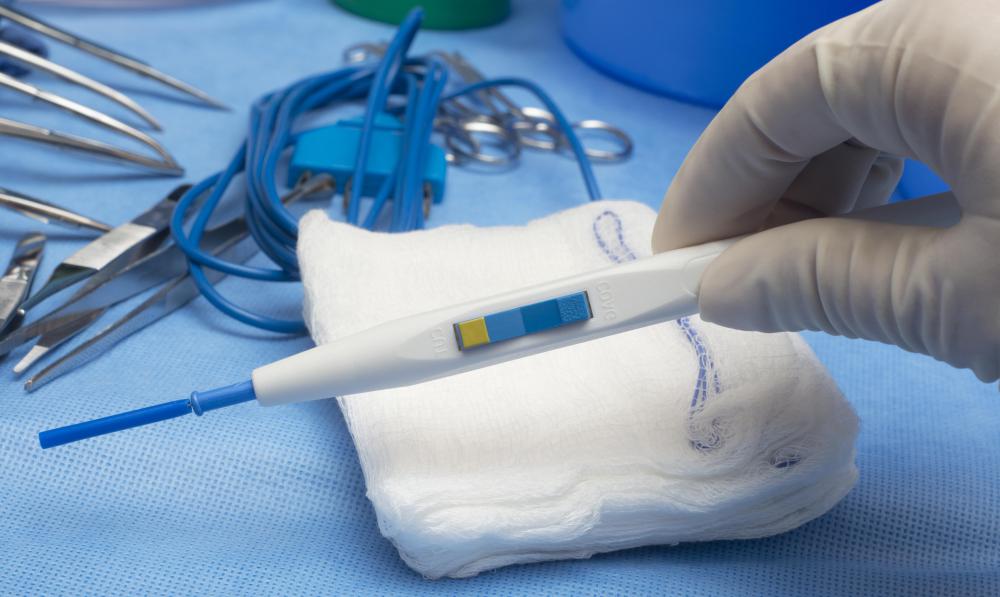At WiseGEEK, we're committed to delivering accurate, trustworthy information. Our expert-authored content is rigorously fact-checked and sourced from credible authorities. Discover how we uphold the highest standards in providing you with reliable knowledge.
What Is an Electrosurgery Unit?
An electrosurgery unit is a medical machine used to regulate and deliver electrical currents to a variety of hand-held, knife-like devices. Electrosurgery is a technique employed by many surgeons around the world to make small incisions with electricity rather than sharpened blades. The core of this machine is located in the “unit,” a name for the generator and control console that powers the entire operation. Units typically include three key elements: electrodes and patient plates, control knobs and visual displays of output, and hand piece connectors.
Most of the time, an electrosurgery unit is relatively small, and is often able to sit atop a counter or cart in an operating room. Surgeons must usually be able to easily interact with it during procedures, increasing and reducing the currency deliverables as needed. For this reason, knobs are usually designed to be large, and readouts clear.

Units are generally portable, as all moving parts are well contained and protected. Surgical practices can often purchase but one electrosurgery unit that can be moved into operating rooms as needed. The machines are easy to transport. Many of the busiest hospitals invest in units for each surgical suite, however, which can reduce the chance of damage and error. Units are usually small enough that they will not be in the way when not needed.

The science behind electrosurgery is not tremendously complex. Each unit, or generator, takes in power from an electrical source, usually a wall outlet. It then conducts and converts this energy according to doctor-entered specifications and delivers live currents to hand pieces attached by special cables. The pieces deliver highly concentrated streams of electricity onto whatever they touch. When lightly applied to skin, they destroy cell matter and dermis, creating a smooth incision with often only very light bleeding.
An electrosurgery unit is most commonly employed in cosmetic and shallow surgeries, often in dermatology and, sometimes, dentistry. The technique is usually regarded as safe and effective for small incisions, but more major surgeries generally rely on standard knives and cutting. In order for patients to avoid the risk or electrocution or burning, doctors must generally take care to apply carefully placed electrodes across the patient’s body. These are connected to the electrosurgery unit, and help control the current. Metal patient plates for conducting and diverting electricity are often sometimes required, depending on the specifics of the procedure.
The surgery units can often support a range of attached equipment, particularly hand pieces. Surgeons usually choose their pieces, which can also be called “wands” or “Bovies," based on the complexity of the task at hand. Performing electrosurgery is a precise art that requires just the right tools. Small wands are usually best for minor incisions, while larger cuts often require a more intense current. Some of the most advanced units can accommodate so-called “wet” wands, as well.
Wet wands conduct electricity through a saline solution, and are used exclusively when making internal incisions. Most surgeons limit electrosurgery to the surface, but there are some limited circumstances — repairing specific and discreet organ damage, for instance, or removing very small cysts — where internal types of electrosurgery can be helpful. Units optimized for wet work are often more complex, and have separate controls and readouts for internal and external tools. This way, doctors are able to closely monitor progress, and are not likely to confuse their instruments.
AS FEATURED ON:
AS FEATURED ON:












Discuss this Article
Post your comments